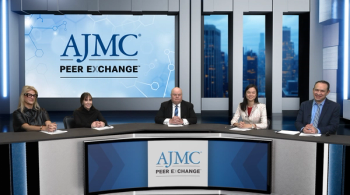
Research Finds Efficacy of LPE Similar to PE in Patients With MG
Lymphoplasmapheresis (LPE) was also completed with fewer replacements compared with plasma exchange (PE) for myasthenia gravis (MG).
Lymphoplasmapheresis (LPE) may be a superior treatment option than plasma exchange (PE) for patients with severe
Data showed that LPE resulted in treatment outcomes on par or better than PE with fewer replacements, researchers explained.
“LPE is a new therapy developed on the basis of traditional PE in combination with leukapheresis,” the authors wrote. However, whether there are differences in efficacy between the 2 treatments remains unclear.
For most patients with MG, the condition progresses over a few years and symptoms can appear in the facial, neck, and limb muscles. Some patients with severe disease can experience life-threatening paralysis of
“PE is a therapeutic procedure in which a patient’s plasma is separated and removed from the blood by a medical device and replaced with a colloidal solution (plasma and or albumin) or a combination of colloidal/crystal solution,” the authors explained.
However, compared with PE, LPE removes immunoreactive cells from patients’ plasma, along with soluble pathological immune factors. According to the researchers, this leads to a more effective and sustainable control of pathological immune response in patients with MG.
To compare the 2 treatments in patients with severe MG, the study authors assessed data from individuals treated between November 2016 and January 2022 in a hospital in China.
Seventy-two percent of the cohort that underwent PE were female, along with 61.8% of the group that underwent LPE. Both cohorts had an average age of approximately 45 years.
The safety profiles of the 2 treatment modalities were good, and no serious adverse events were reported. Researchers compared outcomes between 62 patients treated with LPE and 62 with PE.
Those who underwent PE had 232 total replacements, for an average of 3.74. Individuals in the LPE group had 117 replacements, for a mean of 1.89.
Analyses also revealed these findings:
- PE significantly improved patients’ Quantitative Myasthenia Gravis Score (QMGS) performance, with the mean (SD) QMGS decreasing from 22.98 (4.03) points at baseline to 18.34 (5.03) points following treatment, a decrease of 4.68 (4.04) points (P < .001)
- A decrease of at least 3 points in the QMGS was considered a significant improvement, with a treatment response rate of 67.7% recorded in the PE group
- In the LPE group, patients’ mean QMGS was 23.19 (4.11) points at baseline and 16.94 (5.78) points after treatment, a decrease of 6.26 (4.39) points (P < .001)
- The improvement in QMGS was more significant in patients treated with LPE compared with the PE group (P = .039)
Treatment response rates in each group were not significantly different, while those who completed LEP had a shorter mean length of hospital stay compared with the PE group. However, this difference was also not statistically significant. Both treatments were effective in lowering patients’ levels of inflammatory cytokines.
“During the 2-month follow-up period, LPE may be associated with better functional outcomes for patients, with lower QMG score and relapse rate,” the authors wrote.
The data also “provide further evidence to support the application of LPE as a new treatment option for MG,” they added.
The lower average number of replacements in the LPE group helps reduce the risk of serious adverse events and cuts down on patients’ treatment burdens, the researchers explained. It also helps reduce plasma consumption.
Results of the current study should be confirmed in randomized controlled trials, the authors wrote.
“The underlying therapeutic mechanism of LPE in severe MG needs to be delved in depth to further strengthen the evidence supporting the application of LPE in the management of severe MG,” they concluded.
Reference
Duan W, Jiang F, Cai H, et al. Lymphoplasmapheresis versus plasma exchange in severe myasthenia gravis: a retrospective cohort study. Front Neurol. Published online June 27, 2023. doi:10.3389/fneur.2023.1212868
Newsletter
Stay ahead of policy, cost, and value—subscribe to AJMC for expert insights at the intersection of clinical care and health economics.




























































